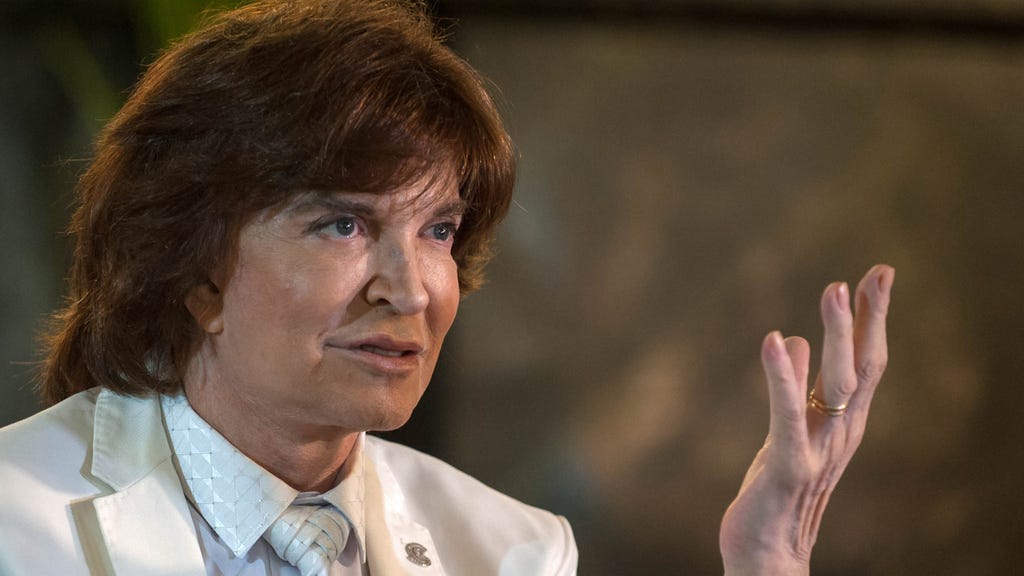ET is paying tribute to the late Camilo Sesto.
When famed Spanish musician Camilo Sesto died in September 2019, the 72-year-old was readying himself for yet another tour. Despite bidding show business goodbye several times before, the “Perdóname” singer was looking forward to continuing to add hits and concert dates to his storied, decades-long career.
Born Camilo Blanes Cortés in Alcoy, the prolific singer and songwriter was one of the most successful musical acts to come out of Spain. His hits defined an entire generation of artists who took inspiration in his lovelorn ballads and pop-infused sensibility that dominated the charts in the 1970s and 1980s. To commemorate his legacy, ET is looking back at five seminal moments from his career that capture what made him such an enduring icon.
His Big Break
While Sesto was first introduced to the world through his work in bands like Los Dayson and Camilo y los Botines, his big break came when he performed a Johannes Brahms lullaby on live television in 1971. It was not long before the singer, whose long locks and modern style earned him comparisons to The Beatles, snagged his first No. 1 hit with “Algo de mí,” from his self-titled debut album. Over the next few decades, Sesto would notch a whopping 52 No. 1 hits, selling over 70 million copies, making him one of the bestselling Spanish artists of all time.
His Musical Dream Come True
As Sesto cemented himself as a singing superstar, the artist had his eyes set on a very different kind of superstardom. After being awed by Andrew Lloyd Webber’s Jesus Christ Superstar in London, Sesto was intent on producing a Spanish production of that Broadway and West End hit. Sesto not only bankrolled the project (a risky endeavor at the time) and cast himself in the titular role, but translated Lloyd Webber’s lyrics into Spanish. Despite the risk involved, the 1975 production was a success and led to a cast recording that same year, which was later remastered and re-released on its 30th anniversary. Sesto’s love for Lloyd Webber’s work continued decades later, when he attempted to produce a Phantom of the Opera album that was never released.
His Mentorship of Miguel Bosé
As his own career was on the rise, Sesto was instrumental in championing the work of two other singers who’d become legends in their own right. In the early 1970s, when a young Miguel Bosé was considering dabbling in music, it was Sesto who took him to a studio, where he produced his very first singles, “Soy” and “Es tan fácil.” While neither song became a hit when they were released in 1975, Sesto’s support eventually led Bosé to signing with a label and releasing his first record, Linda. Similarly, Sesto was an avid champion of José José, producing the Mexican singer’s wildly successful 15th album, Si me dejas ahora. (He also wrote the title track.)
His Dallas Connection
Throughout his career, Sesto released many of his Spanish-language hits in other languages, including German, Portuguese, Italian and English. But one of his most surprising crossover moments came when he teamed up with Dallas actress Audrey Landers (Afton Cooper on the long-running CBS drama) for the 1985 single “My Love/Mi Amor,” which got airplay both in the States as well as in various European countries.
His Disney Moment
The renowned recording artist had his fair share of pivotal live performances, from his iconic Viña del Mar performances (in 1974, 1981, 2004) to his Vegas shows and concerts all over the world. Ahead of his first announced retirement in 1987 (he’d do a number of farewell tours over the years, most recently in 2008), he performed at Disneyland, where he took part in a parade alongside the park's signature characters, played a concert for more than 6,000 people and even recorded a video with Snow White.
RELATED CONTENT:
